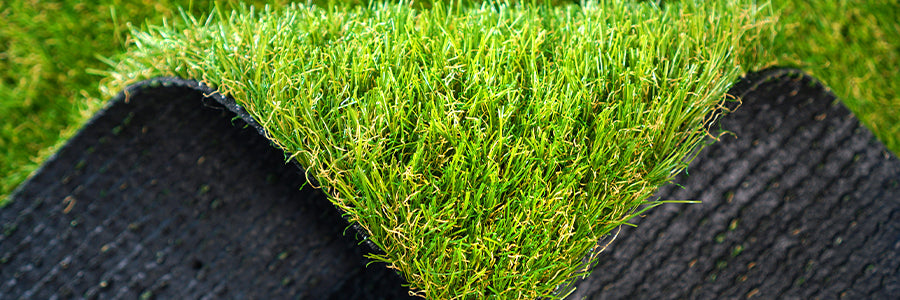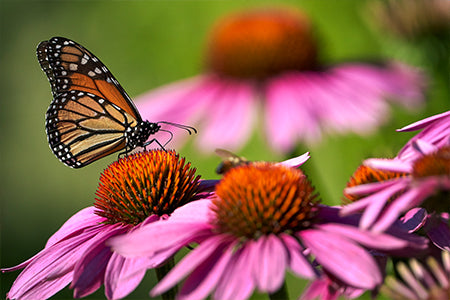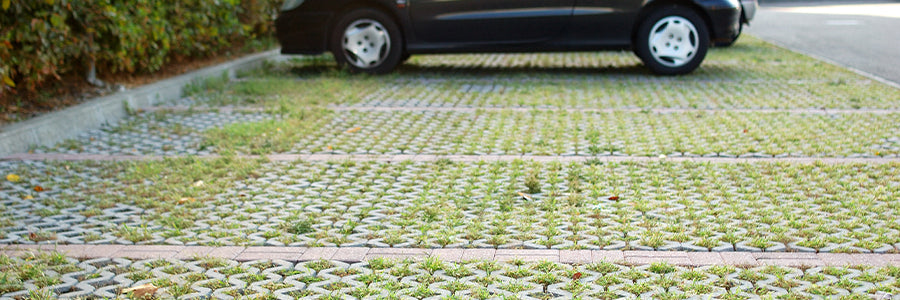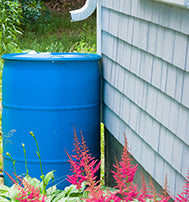Sustainable Hardscaping: A Guide to Eco-Friendly Landscapes - by Stephanie Rogers
Posted by Jill Yanus on
In an increasingly conscientious real estate market, homeowners are constantly on the lookout for ways to make their properties more environmentally friendly. While this immediately gets people to thinking in terms of solar panels, EnergyStar appliances, and smart windows, turning the attention outdoors is a critical component of creating a truly eco-friendly home. According to the EPA, homeowners in some regions contribute 70% of their home’s water consumption to exterior applications, highlighting the significance that exteriors play in a home’s sustainability efforts. Moreover, many homeowners use vast amounts of energy and resources simply to keep their landscaping in presentable condition. To avoid this scenario and reduce consumption in your exterior, keep reading for a detailed breakdown for some of the most eco-friendly landscaping ideas of 2024.
Artificial Turf

One of the best ways to create an eco-friendly landscape is to replace grass lawns with artificial turf. The best artificial grass suppliers have modern options that are nearly indistinguishable from natural grass, creating the appearance of the classic American lawn with none of the water consumption. In addition, there are few ongoing maintenance concerns with artificial turf. Aside from raking leaves or other debris, it is recommended to gently spray the artificial grass with a soap and water mixture to stymie dust, pollen, and pet urine every other week. Pressure washing is not a good idea, as it consumes more water and can cause some clumping in artificial grass infill.
Native Plants

Although exotic plants may make a statement, many require an overabundance of resources to remain in bloom. From fertilizers to excess water consumption, non-native plants are simply not a sustainable landscaping option. Therefore, opt for native plants known to thrive in the local climate. They will be better adapted to the soil, require less water and fertilizer, and be less likely to die from disease. They can also help attract local wildlife to create a thriving habitat right in your backyard. You can also opt for organic weed and pest control with horticultural vinegar sprayers.
Permeable Pavers

Permeable pavers consist of a tough, flexible, recycled-plastic interlocking grid system that holds materials such as grass, stone, and pea gravel in place for exterior landscaping applications. In addition to its elite drainage properties that helps prevent runoff contamination to the home’s exterior, permeable pavers provide an ideal option for parking on the grass and creating stunning, natural exteriors. Permeable paving systems are much lower maintenance than traditional asphalt or concrete driveways and sidewalks, as they never stain, crack, or have to be repaired. As a result, more and more homes are turning to permeable pavers to improve eco-friendliness and lower ongoing maintenance costs.]
Solar Powered Lighting
Exterior lighting is a wonderful means of putting the cherry on top of a stunning landscape. However, using electricity to light the exterior can justifiably be considered superfluous to those looking for sustainability. As such, look into solar-powered options for exterior lighting. There are many wonderful LED lighting strips and chains that use energy stored from sunlight to efficiently frame the landscape’s walkways and highlight the exterior’s best features after dusk.
Erosion Control
Erosion control is an absolutely essential component of creating an eco-friendly exterior, with erosion being a major contributor to the loss of animal habitat, water pollution, and diminished farmland. Therefore, look into ways how to waterproof under your deck, consider a drip irrigation system over more high-pressure techniques, and make sure that all soil is properly aerated to ensure that water runoff does not create a problem. If you live in an area of heavy precipitation, consider features such as rain gardens, French drains, and retaining walls to stylishly and effectively control erosion.
Energy Efficiency Techniques

There are a number of interesting ways to improve the energy efficiency of a property through landscaping choices. Some of the most trendy include:
- Growing vines on masonry exteriors and wood trellises to add insulation
- Shading the air conditioning unit with bushes and shrubs, and regularly cleaning it to keep it from overheating and working harder
- Planting trees in an arc around the home to provide shade in the summer and block chilly winds in the winter
Not only will these intentional landscaping choices add an element of rustic appeal to the exterior, but they will also reduce the home’s energy consumption and utility bills in the process.
Water Harvesting
 A rain harvesting station is a unique way to more efficiently use rainwater. Consider rain chains for gutters that direct stormwater into a rain barrel that matches your exterior’s aesthetic. Once you have filled the barrel, you can store and use the water whenever it becomes necessary instead of losing it to runoff. One option is to pour the runoff into a handheld sprayer to water indoor or hanging plants.
A rain harvesting station is a unique way to more efficiently use rainwater. Consider rain chains for gutters that direct stormwater into a rain barrel that matches your exterior’s aesthetic. Once you have filled the barrel, you can store and use the water whenever it becomes necessary instead of losing it to runoff. One option is to pour the runoff into a handheld sprayer to water indoor or hanging plants.
The Best Sustainable Landscaping Ideas of 2024
Choosing the most effective landscaping techniques is a vital component of creating a sustainable home in 2024. From artificial turf installation to water harvesting methods, any of the 7 ideas listed above are some of the best ways to create an eco-friendly exterior for your property. For more ideas on ways to use sprayers and other maintenance tools in your hardscaping, explore the products and resources at Chapin today!
Stephanie Rogers is a freelance writer that enjoys sharing her love for writing with others. She primarily writes about home remodeling, interior design ideas, and landscaping, but lately has started writing more about her passion for Music. She lives in her hometown of Phoenix, Arizona where she enjoys spending time with her husband and dog, Chino. Stephanie’s work as a freelance writer can be found on Building Product Advisor, a construction industry resource site.
Share this post
- Tags: backyard garden, chapin, chapin international, chapin sprayers, Chapin SureSpray sprayer, gardening, home & garden, homelife, homeowner, horticultural vinegar, outdoor life



